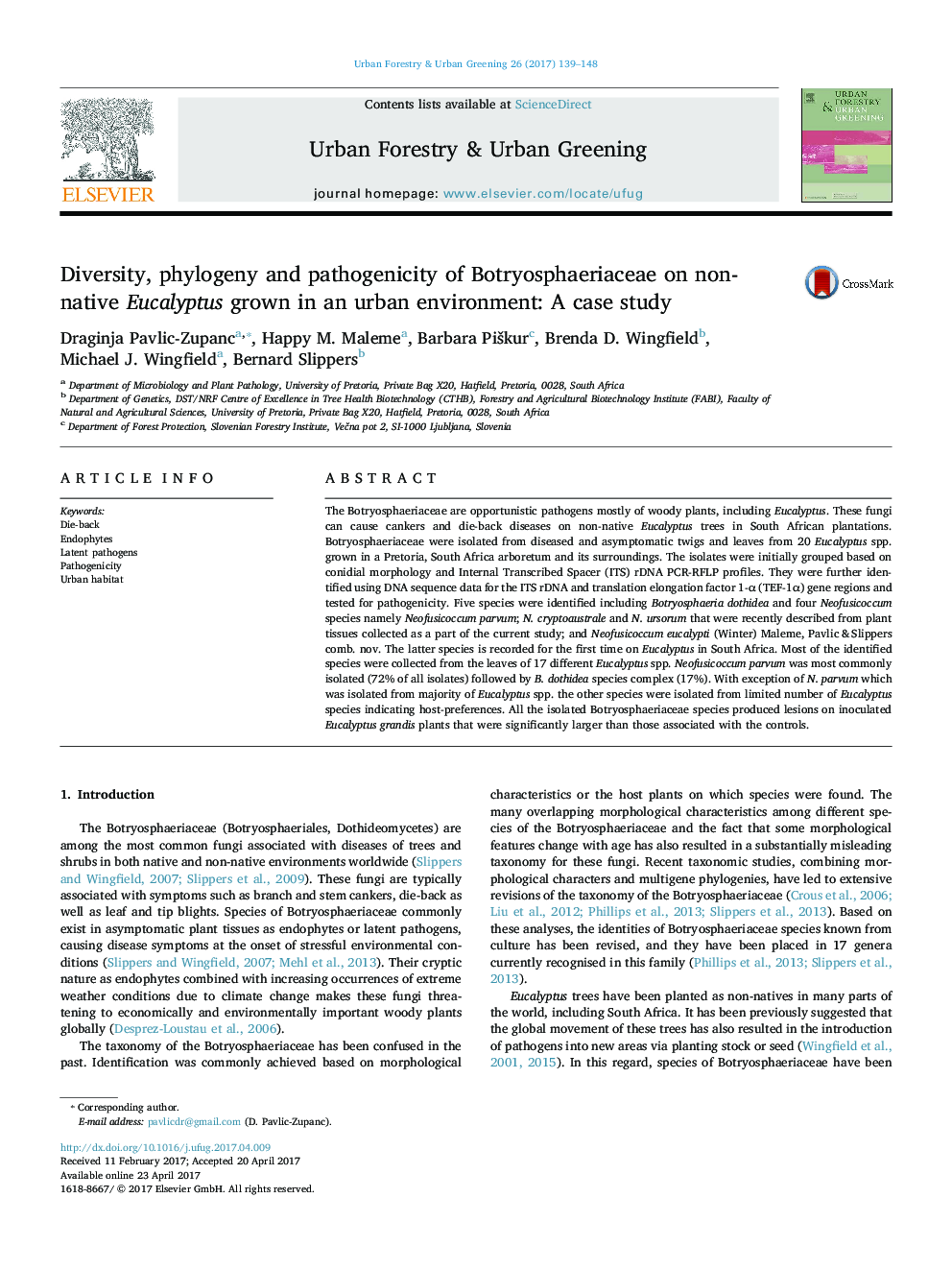| کد مقاله | کد نشریه | سال انتشار | مقاله انگلیسی | نسخه تمام متن |
|---|---|---|---|---|
| 6461842 | 1421864 | 2017 | 10 صفحه PDF | دانلود رایگان |
- Five species of the Botryosphaeriaceae, Botryosphaeria dothidea, Neofusicoccum parvum, N. cryptoaustrale, N. ursorum, and N. eucalypti (Winter) Maleme, Pavlic & Slippers comb. nov. were identified from 20 Eucalyptus spp. planted in an arboretum in Pretoria.
- With exception of N. parvum which was isolated from majority of Eucalyptus spp. the other species were isolated from limited number of Eucalyptus species indicating host-preferences.
- Neofusicoccum eucalypti is recorded for the first time on Eucalyptus in South Africa.
The Botryosphaeriaceae are opportunistic pathogens mostly of woody plants, including Eucalyptus. These fungi can cause cankers and die-back diseases on non-native Eucalyptus trees in South African plantations. Botryosphaeriaceae were isolated from diseased and asymptomatic twigs and leaves from 20 Eucalyptus spp. grown in a Pretoria, South Africa arboretum and its surroundings. The isolates were initially grouped based on conidial morphology and Internal Transcribed Spacer (ITS) rDNA PCR-RFLP profiles. They were further identified using DNA sequence data for the ITS rDNA and translation elongation factor 1-α (TEF-1α) gene regions and tested for pathogenicity. Five species were identified including Botryosphaeria dothidea and four Neofusicoccum species namely Neofusicoccum parvum; N. cryptoaustrale and N. ursorum that were recently described from plant tissues collected as a part of the current study; and Neofusicoccum eucalypti (Winter) Maleme, Pavlic & Slippers comb. nov. The latter species is recorded for the first time on Eucalyptus in South Africa. Most of the identified species were collected from the leaves of 17 different Eucalyptus spp. Neofusicoccum parvum was most commonly isolated (72% of all isolates) followed by B. dothidea species complex (17%). With exception of N. parvum which was isolated from majority of Eucalyptus spp. the other species were isolated from limited number of Eucalyptus species indicating host-preferences. All the isolated Botryosphaeriaceae species produced lesions on inoculated Eucalyptus grandis plants that were significantly larger than those associated with the controls.
Journal: Urban Forestry & Urban Greening - Volume 26, August 2017, Pages 139-148
